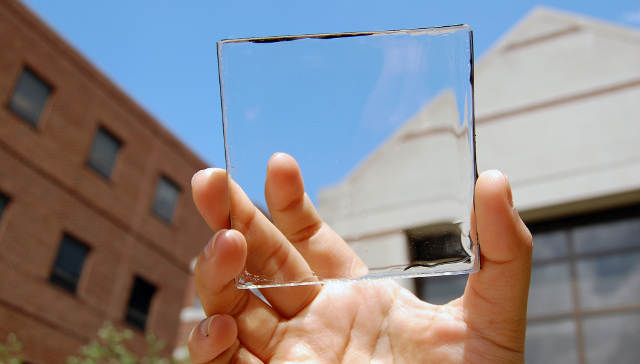
This new transparent solar concentrator uses organic molecules to absorb energy from infrared and ultraviolet light, channeling it into photovoltaic cells whilst allowing all visible light to pass through unaffected.
Richard Lunt, the leader of the team at Michigan State University which carried out the work, said that the aim was to fix flaws in existing "transparent" solar collectors.
Because the materials do not absorb or emit light in the visible spectrum, they look exceptionally transparent to the human eye
Richard Lunt, MSU
These devices also used luminescent plastic-like materials to funnel light towards a photovoltaic array, but crucially they colored the light that passed through them. This severely compromised their use on display screens or windows.
Lunt and his research team developed small organic molecules, which absorb specific non-visible solar wavelengths.
Lunt explained that these materials were customized to pick only the near infrared and ultraviolet wavelengths, then glow at a different infrared wavelength.
This light is directed to the edge of the plastic, where thin photovoltaic solar cell strips convert it to electricity.
This novel technology is highly flexible and can be scaled to industrial or commercial applications economically.
Lunt commented on the new applications for transparent solar collection that this material makes possible:
“It makes it possible to deploy solar energy in a non-intrusive way. It can be used on tall buildings with lots of windows, or any kind of mobile device that demands high aesthetic quality like a phone or e-reader. Ultimately we want to make solar harvesting surfaces that you do not even know are there.”
Presently, the solar conversion efficiency possible with this system is just 1%, but the researchers are aiming to reaching efficiencies beyond 5%. The current best colored plastic solar collector has 7% efficiency.